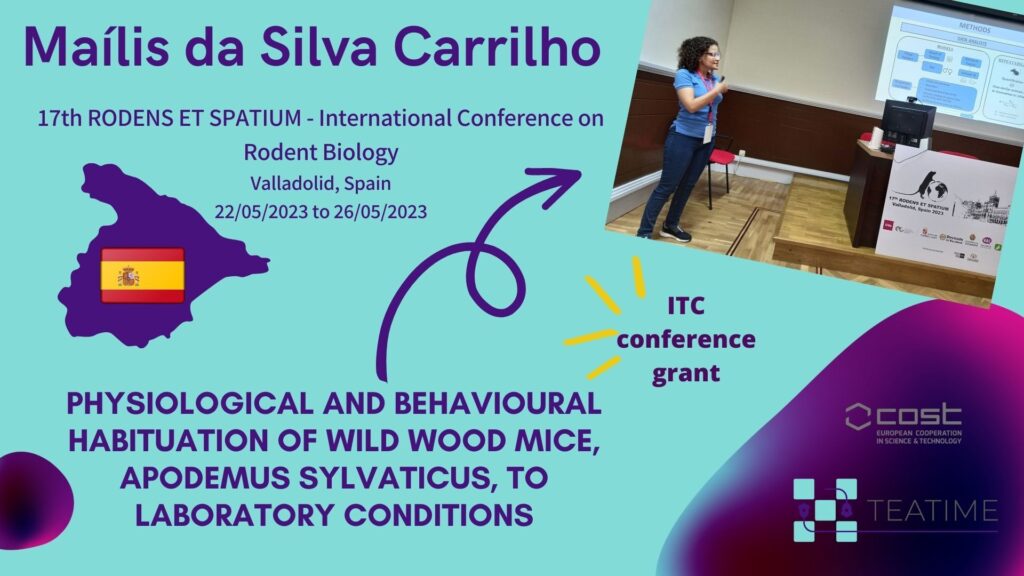
Conference Details
Conference title: 17th RODENS ET SPATIUM – International Conference on Rodent Biology
Conference web-page: https://funge-uva.symposium.events/48130/detail/-17th-rodens-et-spatium-international-conference-on-rodent-biology-22n26-may-2023-valladolid-spain-.html
Conference venue[1]: Valladolid, Spain
Conference start and end date: 22/05/2023 to 26/05/2023
Accepted contribution details
Title of the presentation: PHYSIOLOGICAL AND BEHAVIOURAL HABITUATION OF WILD WOOD MICE, APODEMUS SYLVATICUS, TO LABORATORY CONDITIONS
Type of the presentation: Oral
Co-authors: Rita I. Monarca, Guilherme Aparício, Maria da Luz Mathias, Joaquim T. Tapisso, Sophie von Merten.
Other details of the presentation: Program link – https://funge-uva.symposium.events/48130/programme/-17th-rodens-et-spatium-international-conference-on-rodent-biology-22n26-may-2023-valladolid-spain-.html
Outcome of the conference participation
I present my work on the first day of 17th Rodens Et Spatium (22/05) and I had a very good reaction to it by colleagues from different countries. Many were curious about the methodologies used in my work. Since I was only able to use regular Mak III cages to keep the mice used on this study due to financial reasons, I took the opportunity when talking with colleagues to present the homecage technologies and explain all the advantages that and possibilities of doing this type of work using that equipment, especially regarding the absence of constant manipulation of the animal, which results in more reliable scientific results. Some colleagues showed to be very interested in these technologies and we exchanged contacts to talk about future collaborations to acquire the equipment and even the possibility to apply to a financial support for a project with this aim (especially from Spain and Belgium). We think that although the HCM (home cage monitoring) systems are mostly used for laboratory animals, the potential to bring new insights in the field of wild rodents in captivity is huge, especially regarding habituation of those animals to laboratory conditions. As a results of our conversations, many of those colleagues already add me in scientific social networks to maintain contact with me, especially on ResearchGate. In that sense, I felt that I was able to get the message across to bring attention to the advantages of the use of homecage technology for wild mice, particularly regarding behaviour, circadian rhythm profile and activity when they are kept in laboratory conditions. As such, I intend to briefly contact the colleagues with whom I change contacts to start to plan a concrete future project involving homecage technologies and apply for financial support in our countries.